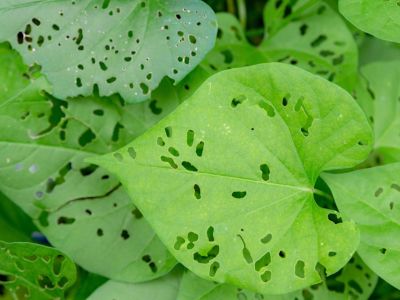What’s Eating My Garden Leaves?
So something is eating holes in plant leaves. What could it be? If big pieces of your leaves are missing, the culprit is a larger animal. Deer can eat at heights up to 6 feet (2 m.), ripping the foliage away and leaving jagged edges on whatever is left. Rabbits, rats, and possums will take away large chunks closer to the ground. Often, though, you will discover that it’s insects eating leaves off your plant.
What to Do for Insects Eating Leaves
Caterpillars of a huge number of varieties may be drawn to your plants. You’ll recognize their feeding as irregular holes in leaves. Some, such as tent caterpillars, are easy to identify by the structures they build on trees. Use a stick to pull the tents, along with all the caterpillars in it, out of the tree and into a bucket of soapy water. Leave them in there for a day to kill them. Many other kinds of caterpillars who don’t live in structures can be killed by an insecticide. Sawflies chew holes that don’t go all the way through the leaf, making it look intact but transparent. Leaf miners burrow twisting tunnels across leaves. For both, treat with insecticidal soap or horticultural oil. Sucking insects poke tiny holes in leaves and draw the juices out of them. Common sucking insects include aphids, squash bugs, and spider mites. Spray your plants diligently with insecticide, as sucking insects can breed so rapidly a single application often isn’t enough. If your plant is strong enough, a good blast with a hose can work well to physically knock them away. Slugs and snails will also feast on your plant leaves. These can normally be controlled by making the area less comfortable for them, such as placing crushed eggshells around your plants. Other common leaf eating insects include:
Leaf cutter bees Japanese beetles Flea beetles
